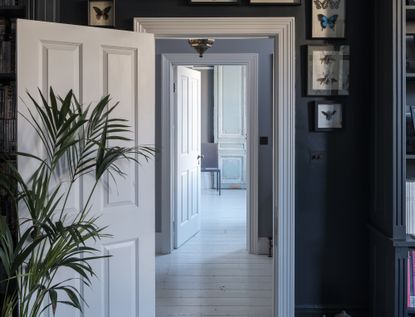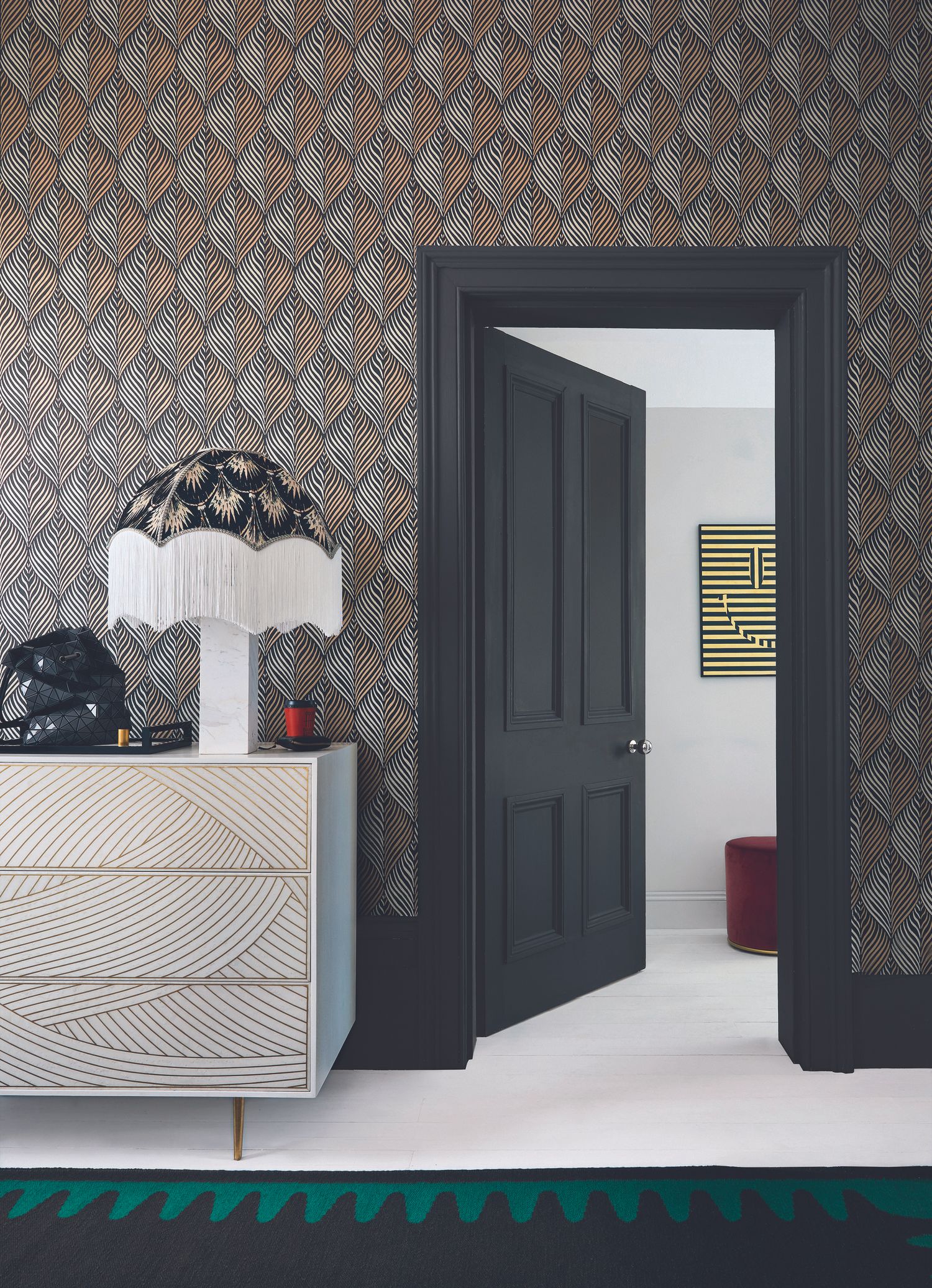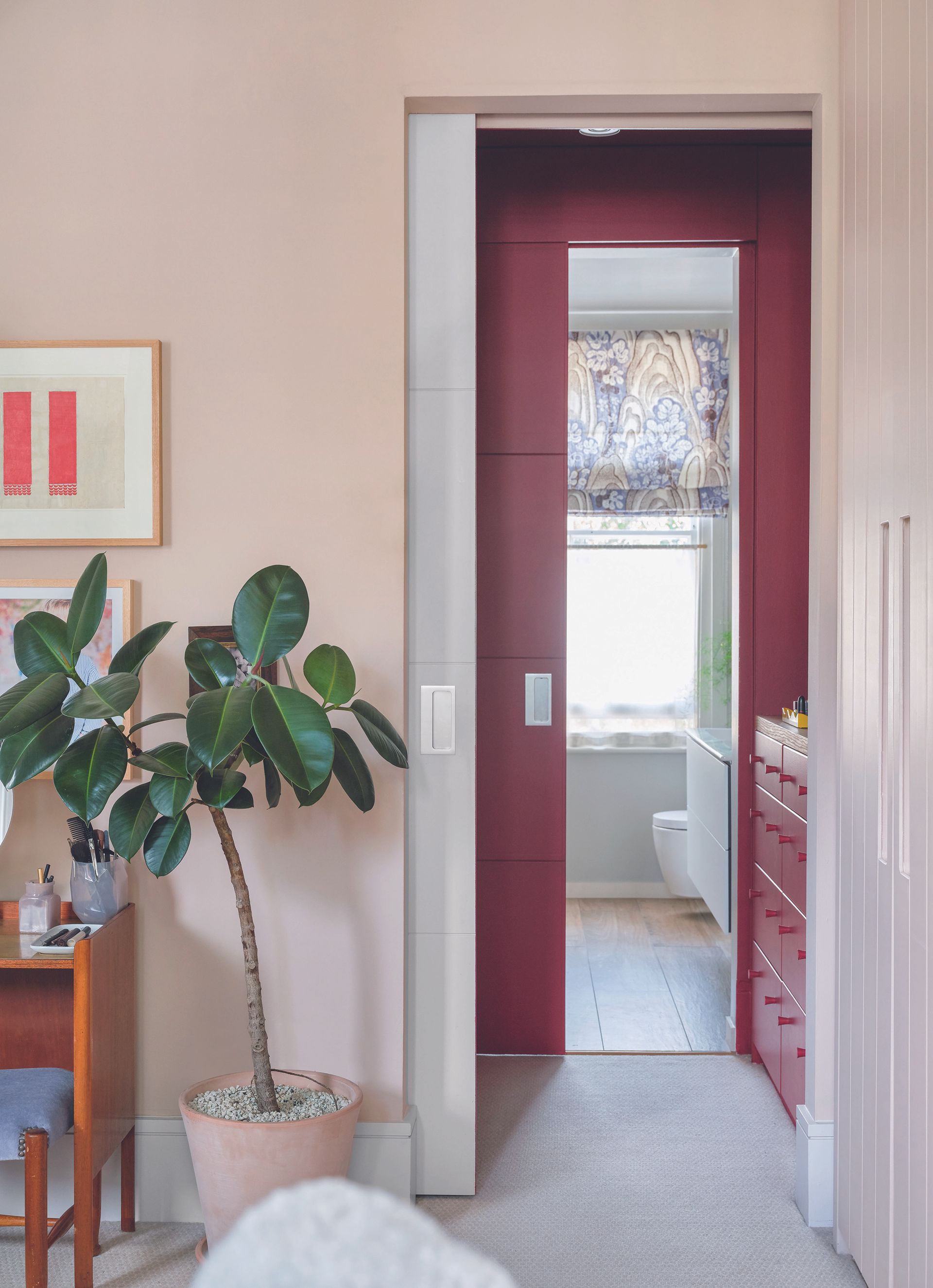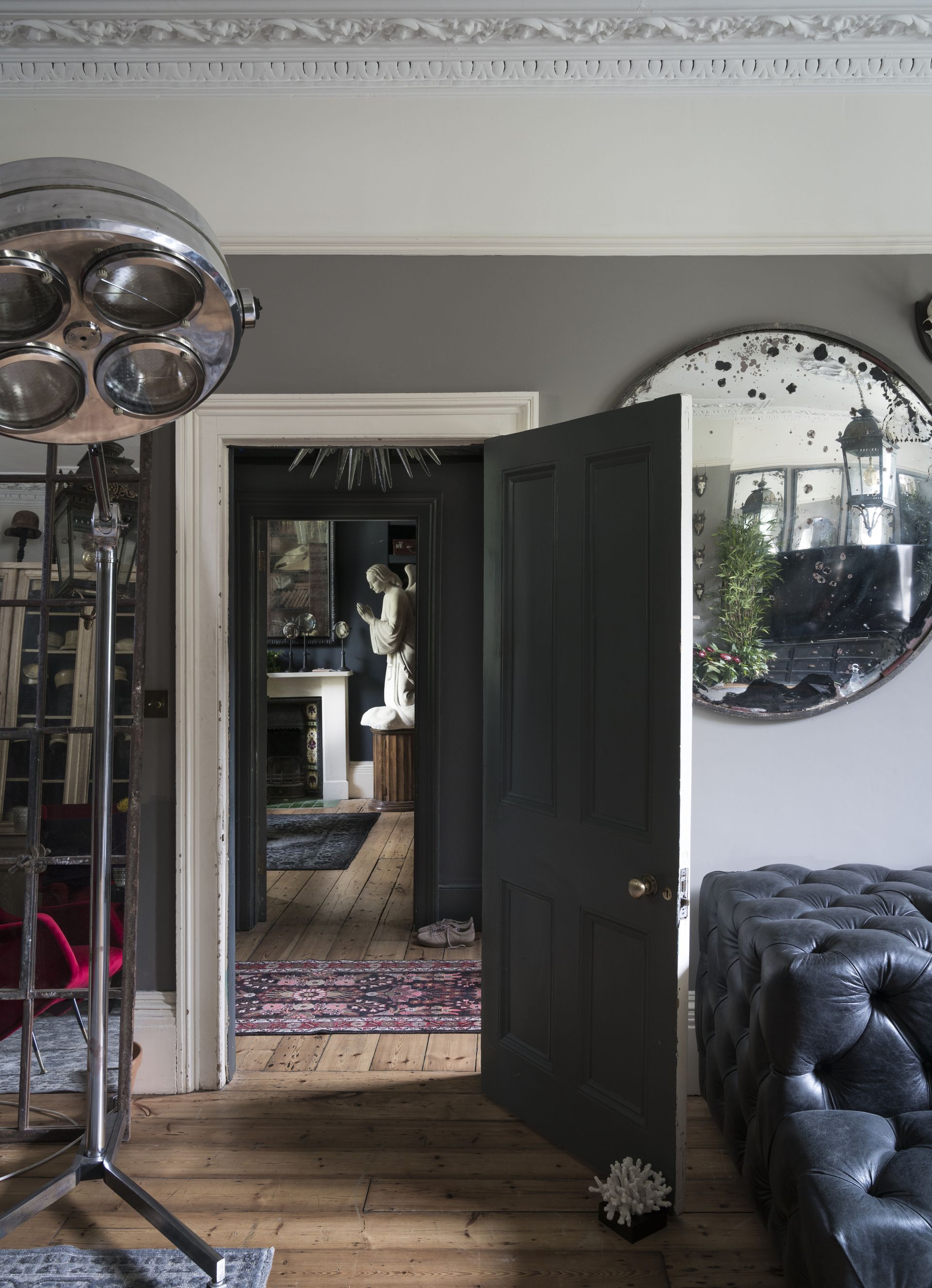Should all interior doors match? Designers explain the pros and cons of both
Quirky and eclectic or simple and uniform? It's hard to know if your interior doors should all be the same, so these designers share their advice


Should our interior doors match? It's a question you haven't necessarily considered, but the more you think about it, the more of a conundrum it becomes. If you don't have them, the thought of uniform doors - as often seen in new build homes - might be an appealing one. Or, perhaps you find an eclectic mix of door styles more exciting. Whatever the case for you, the grass is probably greener on the other side.
However, there are certainly pros and cons to both, and they largely depend on your personal style and approach to paint ideas. If you have a modern home with a more minimalist design, simple and uniform doors might work best for you. On the contrary, if you have an older home that's full of vintage finds curated in a more eclectic style, perhaps you'd prefer it if no two doors looked the same.
Preferences aside, we're here to ask what the designers have to say. While ultimately the answer to this question is a subjective one, there are a few things we can trust our top designers' judgement on, this being one of them. So, if you're wondering whether to switch up your interior doors, it's worth seeing what they have to say first.

Lilith is an expert at following news and trends across the world of interior design. She's committed to helping readers make the best design choices in their homes by answering all their style related questions. For this piece she asked designers for their advice on whether our interior doors should match throughout the home and why.
Is it okay to mix your interior doors?

One of the main principles of design is something we're all aware of - uniformity helps create a cohesive look. There's no doubt about it, not only do things look more organized when they match, but they also look more aesthetically tuned to the rest of your interior.
The same goes for our interior doors. 'While it is okay to mix interior styles, I wouldn’t advise mixing interior door styles,' says Amy Youngblood, Owner & Principal Designer of Amy Youngblood Interiors. 'It’s important to keep some consistency style wise through architectural basics in the home. They may not necessarily have to be the exact same design, but the style needs to stay consistent.'
If you've stayed true to a particular interior design trend, like Scandi or Mid-century Modern, you might find that matching doors throughout your home help to drive the concept home. Amy also makes a noteworthy point about the convenience of matching doors: 'It’s easy to mix up your interior styles with furnishings and change them out overtime, but replacing doors isn't as easy.' Sticking with neutral doors that are the same in each room will make it far easier to switch up your style regularly.
Ultimately though, the question of whether or not your should have matching doors is entirely up to you. There isn't really a right or wrong answer, it all depends on your personal preference and the overall style of your home,' says Jeanette Fusco, Interior Designer at HiHomePicks.
'If you're going for a more traditional look, then it might be best to stick with doors that have a similar style,' she adds. 'However, if you're going for a more eclectic look, then mixing and matching different door styles can add an interesting touch.'
Should they be painted the same color?

Perhaps your decision has been swung in favor of uniform doors, but you might still be wondering, 'should they all be the same color?' Many of us have walls and door trim painted different colors in different rooms. If we were to paint our doors to correspond to our rooms, surely we'd sacrifice that cohesive look?
Even if you go for different style doors, Jeanette believes there's something to be said for matching colors. 'Not only does it make the rooms feel more connected and unified, it can also add a touch of sophistication and style,' she says. 'Ultimately, the decision is up to you as the homeowner, but if you're looking for a way to tie the look of your home together, painting the doors the same color is a great option.'
If you're worried about the shade of your doors clashing with the colors in your separate rooms, it's best to choose a neutral color like white or grey. If you're feeling more daring, go for black doors and door trim for a more dramatic look.
When do matching doors work best?

Undoubtedly, there are certain styles that suit matching interior doors best. For example, if you're a fan of minimalism or neutral schemes, it's a lot easier to execute the look with simple, sleek doors that patch throughout all your spaces.
'They're most effective when used to create a cohesive design theme,' explains Jeanette. 'For example, if all the doors in a home are designed to match the overall style of the house, they can help to create a sense of unity and harmony.'
Think about it, matching doors are not going to be completely noticeable and might slip under visitors' radar - perfect if you're wanting that more understated look. On the other hand, if you want to make a more visual statement in your home that catches the eye, mixing up your doors in each room is sure grab attention.
'Ultimately though, by choosing doors that complement the style of the home, homeowners can create a more polished and put-together look,' adds Jeanette.
What are the benefits of an eclectic mix of door styles?

This isn't to say that a mixture of different interior doors can't work, either. Interior design is all about expressing your individual style and injecting personality into your space. As such, using a variety of different doors is sure to add character to each room in the home.
If you want to embrace an eclectic style, a mix of doors can be a great way to add interest, however, there are a few things to keep in mind when doing so. 'First, it's important to have a plan,' says Jeanette. 'You don't want your space to look like a hodgepodge of random items.' Always keep cohesion in mind, and choose a door that gels with the design of both rooms in opens onto.
'You should also be sure to mix different textures and materials,' adds Jeanette. Try using natural wooden doors in relaxing spaces like the bedroom while adding pops of color in convivial rooms like the kitchen. In transitional spaces like hallways and entryways, glass fronted doors can help introduce more light. As Jeanette notes: 'Using a mixture of textures and styles like this will add depth and interest to your space.'
Be The First To Know
The Livingetc newsletter is your shortcut to the now and the next in home design. Subscribe today to receive a stunning free 200-page book of the best homes from around the world.

Lilith Hudson is the News Editor at Livingetc, and an expert at decoding trends and reporting on them as they happen. Writing news, features, and explainers for our digital platform, she's the go-to person for all the latest micro-trends, interior hacks, and color inspiration you need in your home. Lilith discovered a love for lifestyle journalism during her BA in English and Philosophy at the University of Nottingham where she spent more time writing for her student magazine than she did studying. After graduating, she decided to take things a step further and now holds an MA in Magazine Journalism from City, University of London, with previous experience at the Saturday Times Magazine, Evening Standard, DJ Mag, and The Simple Things Magazine. At weekends you'll find her renovating a tiny one-up, one-down annex next to her Dad's holiday cottage in the Derbyshire dales where she applies all the latest design ideas she's picked up through the week.
-
 How to Thaw a Frozen Pipe — Learn Everything You Need to Know in 5 Minutes With This Guide
How to Thaw a Frozen Pipe — Learn Everything You Need to Know in 5 Minutes With This GuideWinter storm caught you off guard? We asked an expert — just how do you thaw a frozen pipe?
By Hugh Metcalf Published
-
 The 12 Very Best Silk Bedding Pieces — As Our Style Editor Says: 'It's What Dreams Are Made Of!'
The 12 Very Best Silk Bedding Pieces — As Our Style Editor Says: 'It's What Dreams Are Made Of!'Slumber in lustrous luxury with the very best silk bedding sheets, duvets, pillowcases, and more — your sleep score will thank us later
By Julia Demer Published

